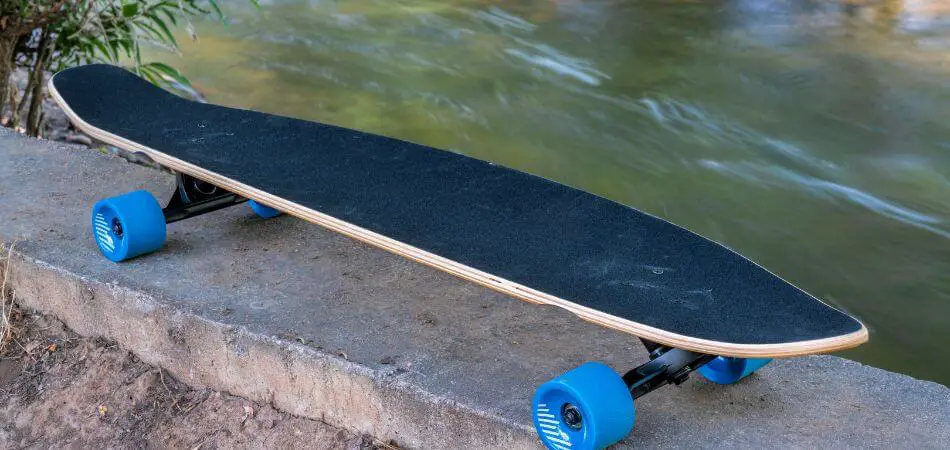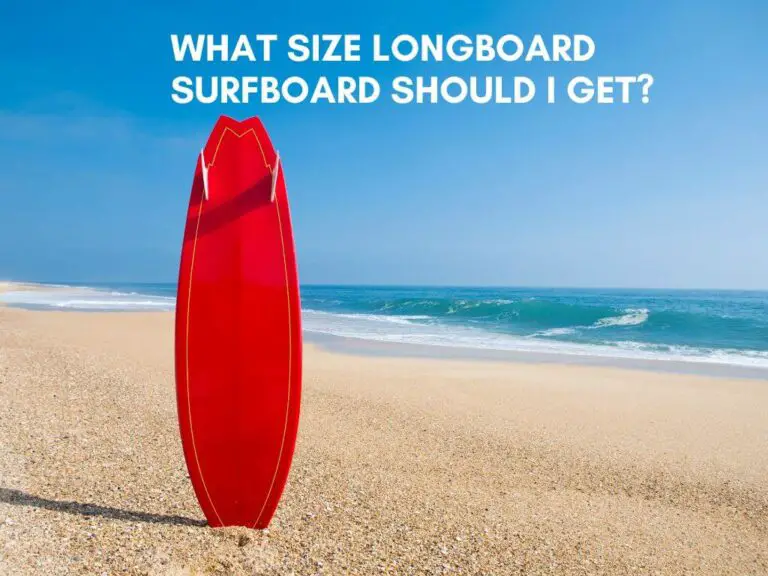When it comes to longboarding, the deck is the heart of your setup. Whether you’re cruising down scenic pathways, carving through city streets, or mastering downhill speeds, choosing the perfect longboard deck can make all the difference in your ride. But with so many shapes, sizes, and materials available, how do you find the one that’s right for you?
In this guide, we’ll break down everything you need to know about choosing the perfect longboard deck—from understanding deck flex and length to selecting the ideal shape for your riding style. By the end, you’ll be equipped with the knowledge to pick a deck that not only enhances your performance but also reflects your personality. Let’s dive in and find the deck that will take your longboarding experience to the next level!
Introduction to Longboard Decks
Longboard decks are the foundation of your riding setup, serving as the platform that connects you to the wheels and trucks. The deck’s design, materials, and construction can have a significant impact on your stability, control, and overall riding experience. Understanding the nuances of longboard decks is crucial for making an informed decision that aligns with your needs and preferences.
Different Types of Longboard Decks
Longboard decks come in a wide variety of shapes, sizes, and constructions, each catering to specific riding styles and preferences. Some of the most common types of longboard decks include:
- Drop-Through Decks: These decks feature a cutout in the middle, allowing the trucks to be mounted through the deck for a lower center of gravity and improved stability at high speeds.
- Top-Mount Decks: In this design, the trucks are mounted on top of the deck, providing a more responsive and agile feel, ideal for freestyle and technical riding.
- Pintail Decks: Characterized by their tapered, teardrop-shaped design, pintail decks offer excellent directional stability and are often used for cruising and long-distance riding.
- Directional Decks: These decks have a distinct front and back, with features like kicktails or nose/tail shapes that enhance maneuverability and allow for more advanced tricks.
- Symmetrical Decks: Featuring a symmetrical shape, these decks are versatile and can be ridden in both forward and reverse directions, making them suitable for a wide range of riding styles.

Factors to Consider When Choosing a Longboard Deck
When selecting the perfect longboard deck, there are several key factors to consider:
- Riding Style: Assess your preferred riding style, whether it’s downhill racing, freestyle, cruising, or a combination of disciplines. This will help you narrow down the deck options that best suit your needs.
- Deck Shape and Size: Understand how the deck’s shape, length, and width can impact stability, maneuverability, and overall ride feel.
- Deck Material: Choose a material that offers the desired balance of strength, weight, and flex characteristics to match your riding preferences.
- Deck Flex: Determine the level of flex that will provide the optimal combination of responsiveness and comfort for your riding style.
- Deck Concave: Understand how the deck’s concave profile can affect your foot positioning, grip, and overall control.
- Deck Mounting Options: Explore the advantages of different truck mounting configurations, such as drop-through or top-mount, to find the best fit for your needs.
- Deck Graphics and Personalization: Customize your longboard deck with graphics, designs, and colors to reflect your personal style and taste.
Understanding the Different Shapes and Sizes of Longboard Decks
Longboard decks come in a wide range of shapes and sizes, each with its own unique characteristics and performance attributes. Let’s dive deeper into the key differences:
Deck Shape:
- Pintail: Tapered, teardrop-shaped decks that offer excellent directional stability and are well-suited for cruising and long-distance riding.
- Directional: Decks with distinct front and back ends, often featuring kicktails or nose/tail shapes, which enhance maneuverability and allow for more advanced tricks.
- Symmetrical: Decks with a symmetrical shape that can be ridden in both forward and reverse directions, offering versatility for a wide range of riding styles.
Deck Size:
- Length: Longboard decks typically range from 36 to 42 inches in length, with shorter decks providing more agility and longer decks offering increased stability.
- Width: Deck widths can vary from 8 to 10 inches, with wider decks offering more stability and foot platform, while narrower decks are better suited for technical riding and maneuverability.
Understanding the nuances of deck shape and size will help you make an informed decision that aligns with your specific riding needs and preferences.
Choosing the Right Material for Your Longboard Deck
The material used in the construction of a longboard deck can have a significant impact on its performance, durability, and overall feel. Some of the most common materials used in longboard deck manufacturing include:
- Maple: A classic choice, maple offers a good balance of strength, weight, and flex, making it a popular option for a wide range of riding styles.
- Bamboo: Bamboo decks are known for their lightweight, flexible, and eco-friendly properties, making them a great choice for cruising and freestyle riding.
- Composite Materials: Decks made from a combination of materials, such as fiberglass, carbon fiber, or epoxy resin, can offer enhanced strength, stiffness, and vibration dampening.
- Hybrid Constructions: Some longboard decks feature a combination of materials, such as a bamboo core with a fiberglass or carbon fiber outer layer, to optimize performance and durability.
When selecting the right material for your longboard deck, consider factors like your riding style, weight, and personal preferences to find the best balance of strength, flexibility, and overall ride quality.
Longboard Deck Flex and How It Affects Your Riding Style
The flex of a longboard deck is a crucial factor that can significantly impact your riding experience. Deck flex refers to the amount of bending or flexing the deck allows, and it can be classified as:
- Stiff Decks: These decks offer minimal flex, providing a more responsive and stable feel, ideal for high-speed downhill riding and aggressive carving.
- Flexible Decks: Decks with more flex offer a smoother, more comfortable ride, making them well-suited for cruising, freestyle, and long-distance riding.
- Medium Flex: A balance between stiffness and flexibility, medium-flex decks can be a versatile option, catering to a wide range of riding styles and skill levels.
When choosing the right deck flex, consider your weight, riding style, and the type of terrain you’ll be traversing. Heavier riders may prefer a stiffer deck for better support, while lighter riders may benefit from a more flexible deck for a smoother and more responsive ride.
Longboard Deck Concave and Its Impact on Performance
The concave profile of a longboard deck refers to the curvature of the surface, and it can have a significant impact on your foot positioning, grip, and overall control. Different concave profiles include:
- Radial Concave: A gentle, rounded concave that provides a comfortable and stable foot platform, suitable for cruising and long-distance riding.
- W-Concave: A more pronounced concave shape with a distinct “W” profile, offering increased foot lock-in and improved control for technical riding and freestyle maneuvers.
- Progressive Concave: A combination of radial and W-concave, providing a versatile profile that can adapt to a variety of riding styles and skill levels.
Choosing the right concave profile can enhance your ability to maintain a secure foot position, initiate turns, and execute tricks with precision and confidence.
Longboard Deck Width and Why It Matters
The width of a longboard deck can have a significant impact on your riding experience. Deck widths typically range from 8 to 10 inches, and the choice can be influenced by factors like your foot size, riding style, and personal preference.
- Narrower Decks (8-9 inches): These decks offer increased maneuverability and are well-suited for technical riding, freestyle, and tight-radius turns.
- Wider Decks (9-10 inches): Wider decks provide a larger foot platform, improved stability, and a more comfortable feel, making them a great choice for cruising, downhill, and long-distance riding.
When selecting the appropriate deck width, consider your foot size, riding style, and the type of terrain you’ll be navigating. Wider decks can offer more stability and control, while narrower decks can enhance responsiveness and agility.

Longboard Deck Length and Its Influence on Stability and Maneuverability
The length of a longboard deck can have a significant impact on your riding experience, particularly in terms of stability and maneuverability. Deck lengths typically range from 36 to 42 inches, and the choice can be influenced by factors like your height, riding style, and personal preference.
- Shorter Decks (36-38 inches): These decks are generally more maneuverable and responsive, making them well-suited for technical riding, freestyle, and tight-radius turns.
- Longer Decks (40-42 inches): Longer decks offer increased stability and a more comfortable ride, making them a great choice for cruising, downhill, and long-distance riding.
When selecting the appropriate deck length, consider your height, riding style, and the type of terrain you’ll be navigating. Taller riders may prefer longer decks for increased stability, while shorter riders may benefit from the enhanced maneuverability of shorter decks.
Longboard Deck Mounting Options and Their Advantages
The way a longboard deck is mounted to the trucks can have a significant impact on the overall riding experience. Two of the most common mounting options are:
- Drop-Through Mounting: In this configuration, the trucks are mounted through cutouts in the deck, resulting in a lower center of gravity and improved stability at high speeds.
- Top-Mount Mounting: With this design, the trucks are mounted directly on top of the deck, providing a more responsive and agile feel, ideal for freestyle and technical riding.
Each mounting option offers unique advantages, and the choice will depend on your riding style, skill level, and personal preferences. Experimenting with different mounting configurations can help you find the perfect setup for your needs.
Personalizing Your Longboard Deck with Graphics and Designs
One of the joys of owning a longboard is the ability to personalize it with graphics, designs, and colors that reflect your individual style and personality. From bold, eye-catching graphics to subtle, minimalist designs, the options for customization are endless.
Customizing your longboard deck can not only make it visually appealing but can also enhance your overall riding experience by boosting your confidence and pride in your setup. Whether you choose to work with a professional graphic designer or create your own custom artwork, the process of personalizing your deck can be a fun and rewarding experience.
Maintaining and Caring for Your Longboard Deck
To ensure your longboard deck continues to perform at its best and maintain its aesthetic appeal, it’s essential to properly maintain and care for it. Some key tips for longboard deck maintenance include:
- Regular Cleaning: Wipe down your deck with a damp cloth to remove dirt, debris, and any built-up grime.
- Applying Deck Protectant: Use a dedicated deck protectant or sealant to help preserve the deck’s finish and prevent wear and tear.
- Inspecting for Damage: Regularly check your deck for any cracks, chips, or delamination, and address any issues promptly to prevent further damage.
- Proper Storage: When not in use, store your longboard in a dry, cool place, away from direct sunlight, to protect the deck’s materials and graphics.
By following these simple maintenance practices, you can ensure your longboard deck remains in top condition and continues to provide you with an exceptional riding experience for years to come.
Conclusion
Choosing the perfect longboard deck is a crucial step in unlocking your full potential on the pavement. By understanding the different types of decks, the key factors to consider, and how to personalize your setup, you’ll be well on your way to finding the ideal longboard deck that perfectly matches your riding style and preferences.
Remember, the journey of finding the perfect longboard deck is an ongoing process, and it may take some trial and error to discover what works best for you. Don’t be afraid to experiment, seek advice from experienced riders, and trust your own instincts to guide you towards the ultimate longboarding setup.Are you ready to take your longboarding to the next level? Explore our wide selection of high-quality longboard decks and find the perfect one for your riding style. Browse our collection now and unlock your full potential on the pavement!








